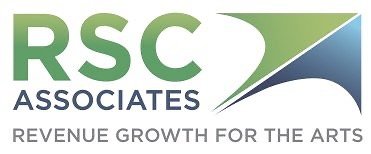LEEADERSHIP BURNOUT IS REAL — AND HERE’S WHAT YOU CAN DO ABOUT IT
With Bob Swaney
If you’ve been in the trenches long enough, you know exactly what we’re talking about when I say a single word: burnout. Leadership burnout is not just some buzz phrase. It’s a very real problem in arts organizations, and if we don’t take it seriously, we’re going to continue losing great industry people.
So, let’s break it down. What is leadership burnout in arts management and Board leadership? Why is it more widespread than it was ten years ago? And most importantly, what can we do about it?
Explore the causes of burnout and some real-world solutions to help prevent it, or reverse it if you’re already there.
Read the full transcript below or click the button to listen.
FULL TRANSCRIPT OF THE PODCAST
If you’ve been in the trenches long enough, you know exactly what we’re talking about today when I say a single word: burnout. Leadership burnout is not just some buzz phrase. It’s a very real problem in arts organizations, and if we don’t take it seriously, we’re going to continue losing great industry people.
So, let’s break it down. What is leadership burnout in arts management and Board leadership? Why is it more widespread than it was ten years ago? And most importantly, what can we do about it? By the end of this post, you’ll have not only a deeper understanding of burnout but also some real-world solutions to help prevent it, or reverse it if you’re already there.
WHAT DOES BURNOUT LOOK LIKE IN ARTS MANAGEMENT AND BOARD LEADERSHIP?
Let’s start with a definition. Burnout, at its core, is chronic exhaustion caused by prolonged stress, high expectations, and a lack of meaningful recovery time. It manifests in different ways. Sometimes it is physical fatigue, sometimes it is emotional detachment, and often it is a creeping sense of futility. It’s what happens when an executive director or Board leader, who started out full of passion and vision, suddenly finds themselves overwhelmed, out of energy, and, worst of all, indifferent to the work they once loved.
For arts management professionals, burnout looks like endless workweeks, unrealistic revenue goals, and the never-ending grind of fundraising, programming, events, and keeping stakeholders happy. It’s the feeling of running on a treadmill that only speeds up with a steeper incline and with no finish line in sight. The demands of grant writing, donor relations, artistic integrity, and audience engagement all stack up, making it harder to take a step back and see the bigger picture. Working HARDER is no longer an option. And when there’s no relief, no strategy for sustainability, people start to check out, either mentally or physically.
For fundraising and marketing leaders, the pressure is even more quantifiable. Every single day, they have to produce results for ticket sales, new memberships, Annual Fund gifts, major donor cultivation. There’s a relentless need to hit ever-increasing revenue goals with fewer resources, all while justifying every expense and defending every decision. The expectation to always be “on,” always selling, always delivering, can wear down even the most enthusiastic professionals.
For Board members, it’s a different kind of exhaustion. Too often, they are asked to do more and more with fewer and fewer resources, often without the training, support, or even the clarity of purpose needed to be effective. Plus, volunteering for a Board is just a small slice of their life, although the responsibilities can feel overwhelming. The lines blur between governance and operations, and suddenly, Board members find themselves micromanaging or putting out fires instead of leading strategically. This leads to frustration, disengagement, and, in some cases, resignation (literally and figuratively).
Why does it seem worse now than it was ten years ago? Simple: the pressures on arts leaders have skyrocketed. Audiences and visitors have changed. Fundraising is more competitive. There are more non-profits out there, adding to the noise. Organizations are being asked to be all things to all people, from community hubs to economic engines and education centers, all while also dealing with tougher budgets and increased scrutiny. The pandemic didn’t help either. It put leaders in constant crisis mode, forcing them to react instead of plan. Some never got out of that reactive state, and now they’re exhausted. Add to that the difficulty of hiring and retaining experienced staff, and you have a perfect storm for burnout at every level.
And here’s the kicker. “No one is an island.” Leaders should not try to be everywhere, do everything, and never screw up. That’s an impossible standard. They need the support of their Board, peers, and the entire organization. When leaders feel like they have to shoulder the burden alone, burnout is inevitable.
WHERE LEADERS GO WHEN THEY’VE HAD ENOUGH, AND WHAT HAPPENS NEXT?
So what happens when burnout wins? Where do these leaders go? Some move to the for-profit sector, where they can finally make a decent salary without having to justify their very existence every fiscal year. Others leave the industry entirely, opting for early retirement or shifting to consultancy roles. Some even take lower-level jobs just to escape the stress of leadership, trading impact for sanity. Some even become consultants!
And here’s the growing problem. Leadership is leaving the arts sector faster than up-and-comers can competently fill the roles. The leadership pipeline is broken. Organizations aren’t investing enough in training and mentorship to develop the next generation of leaders, and as a result, we see massive gaps in institutional knowledge when someone leaves.
According to a 2022 survey by SMU DataArts, “over 40% of arts leaders considered leaving the sector post-pandemic.” Another study from the Association of Arts Administration Educators found that “executive turnover in arts organizations increased by 35% since 2019.” And it’s not just executives. Fundraising and marketing leaders have some of the highest attrition rates, with “over 50% of development professionals leaving their positions within 18 months.”
When an arts leader leaves, it creates instability at every level, including programming, fundraising, partnerships, and public trust, all of which take a hit. And worst of all? Many organizations don’t learn from it. They just find another eager executive, throw them into the fire, and repeat the cycle. That’s not sustainable.
HOW DO YOU PREVENT LEADERSHIP BURNOUT—AND HOW DO YOU RECOVER FROM IT?
Alright, enough of the problems – let’s talk solutions. How do we bring our volunteers and professionals back from the brink of burnout before it happens? Here are some tried-and-true methods to get you started:
1. Stick to a commitment to setting realistic expectations & delegation for your leadership. Leaders can’t do everything. Boards and staff need to share the load in meaningful ways, making sure responsibilities are aligned with skill sets and capacity.
2. Next, go outside for help by engaging strategic outside expertise. Bringing in outside consultants—like RSC Associates—helps take pressure off leadership, provides guidance, and keeps organizations focused on achievable goals in the most efficient, effective ways. Outside perspective can be a game-changer in breaking unhealthy cycles.
3. Third, provide professional development & mentorship opportunities. Too many arts leaders are thrown into the deep end with little-to-no training. Investing in their growth, coaching, and peer networks pays dividends in both effectiveness and retention. Think of it as ‘getting the oxygen you need as a leader.’
4. Next, develop stronger Board governance practices. Boards should support, not just expect. That means setting clear, attainable goals and helping to achieve them. Board development is critical, but just because someone is passionate doesn’t mean they automatically know how to lead. This one is a fine balance, because Board leadership can burn out too, and they need support from each other and the organization.
5. Finally, establish a work-life balance and supporting organizational culture. It may sound obvious, but arts leaders need permission to take time off, set boundaries, and avoid burnout triggers. An overworked leader is not an effective leader.
And if you’re already deep into burnout? Take a step back, ask for help, and start realigning your role. No one should go it alone.
To wrap this up, let’s agree that burnout in the arts is real, it’s widespread, it’s growing, and it’s costly. But it’s not inevitable. We have the tools to prevent it, we just have to use them. Organizations that take care of their leaders—by setting realistic expectations, providing professional development, and engaging outside expertise—can thrive.
If you remember just one thing from this post, make it this…
No one is an island. Leadership in the arts cannot be sustained in isolation. We need to invest in our leaders, our teams, and our future—because without them, the art stops.



